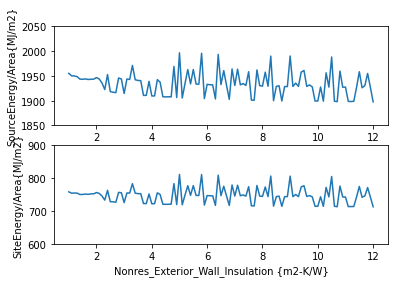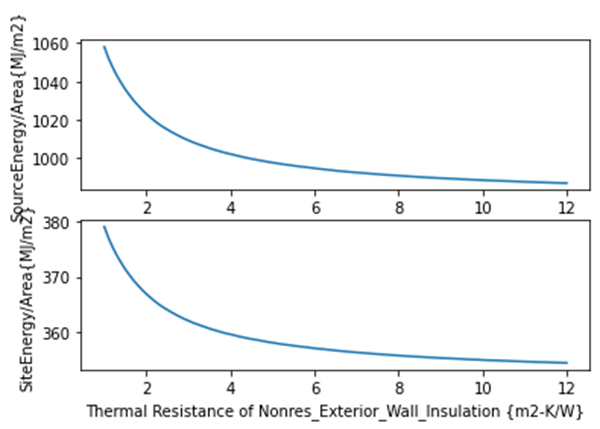The model is the secondary school in the DOE commercial prototype building.
The weather file is the 2012 Rochester, NY (AMY data)
The version of EP+ is 9.0.1
When I was running the simulation, I noticed that sometimes the energy consumption will increase though I only increase the thermal resistance of the exterior wall. Since Rochester, NY belongs to the cold climate zone, the energy consumption should decrease when increasing the thermal resistance of the exterior wall.
I wrote a script for testing. During the testing, I only change the thermal resistance of the exterior wall. The value of thermal resistance of exterior wall (Nonres_Exterior_Wall_Insulation) is set between 1 to 12 m2-K/W. And the result shows that, in the beginning, the energy will decrease with the increased thermal resistance. But when the value exceeds a critical value (around 2.3 m2-K/W), the energy did not have a linear relationship with the thermal resistance of the exterior wall. It seems like the increasing and decreasing of energy is random.
The plot is shown below:

I'm not sure if this issue is caused by the model setting or the setting of EP+. If you have any similar experience, I would really appreciate it if you could give me any suggestions.





